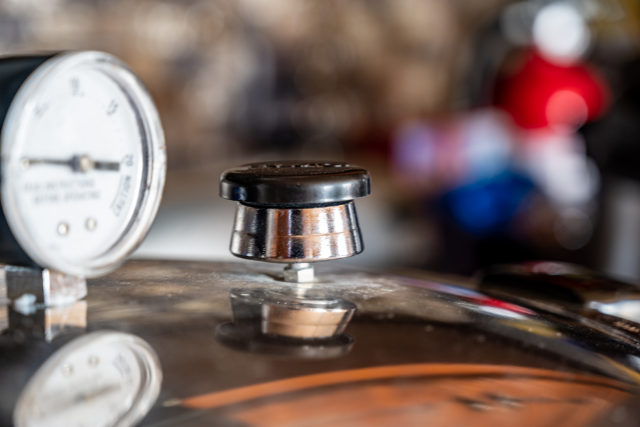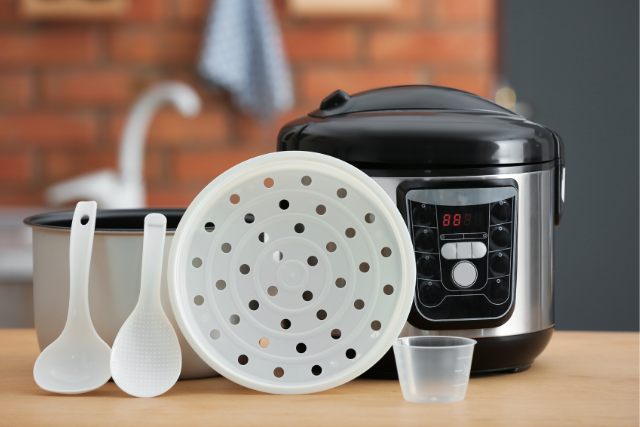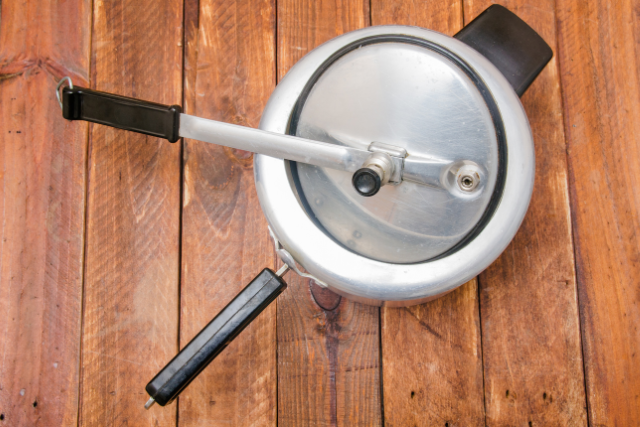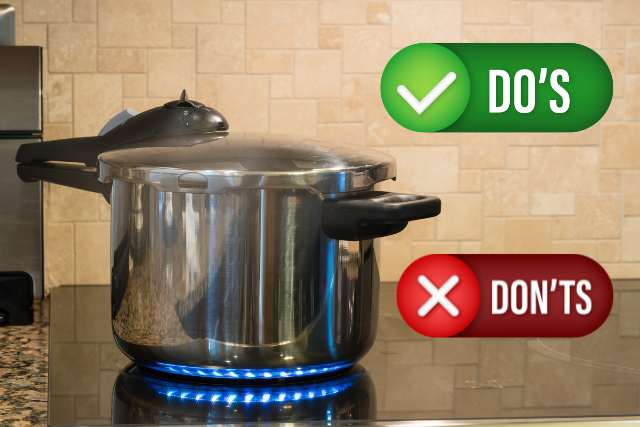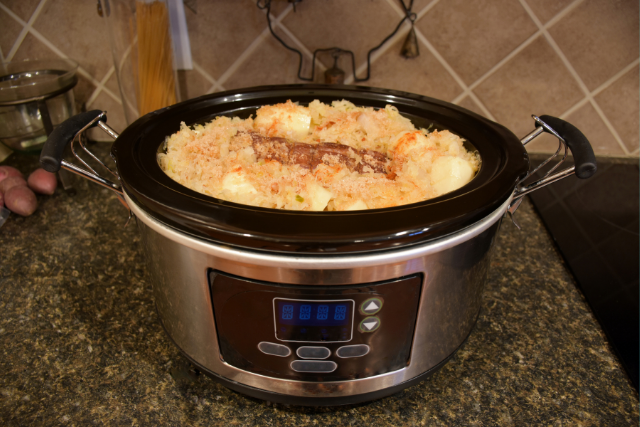Which pressure cooker is best – Stainless Steel vs Aluminium Pressure Cooker
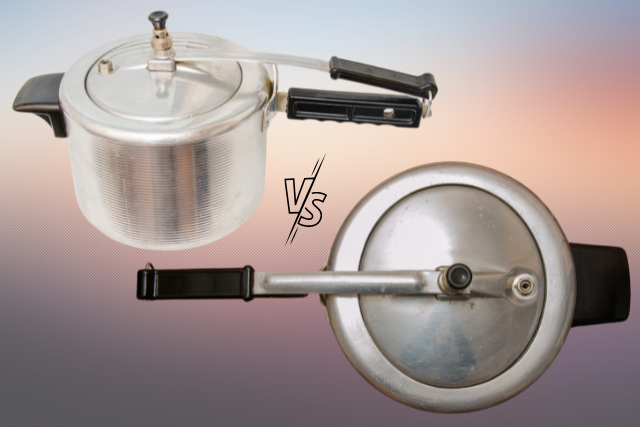
This article answers the popular question in every Indian customer’s mind, which pressure cooker is best? The comparison evolves around Stainless Steel vs Aluminium Pressure cookers. Purchasing a pressure cooker should only be done after great consideration.
The stovetop and electric pressure cookers are your first two options for a pressure cooker. While the majority of people prefer a cooktop model, it is up to you to make that decision. After you’ve decided on the sort of pressure cooker you want for your kitchen, you should think about the materials it’ll be made of.
Stainless Steel vs Aluminium Pressure Cooker
It is possible that your quest for a pressure cooker on the market will become perplexing. With hundreds of thousands of alternatives accessible today, you will have a difficult time choose. There are many different materials like Stainless Steel or Aluminium that may be utilized to make a pressure cooker.
First and first, you must learn about the advantages and disadvantages of each material before deciding which pressure cooker is best – stainless steel or Aluminium pressure cooker? There is no one-size-fits-all pressure cooker. Everything comes down to consumer’s individual likes, preferences, how much money they have to spend, and other variables.
Both types of pressure cookers made of stainless steel and aluminum have been around for a long time and are the most often used in India. Aluminum is a good heat conductor so it is preferred in most cooking utensils. It speeds up the cooking process and saves you money on utility bills.
Aluminum pressure cookers are comparatively affordable. However, there are several drawbacks also associated with aluminum material, which are mostly solved by the use of stainless steel pressure cookers.
TL;DR
| Feature | Stainless Steel Pressure Cooker | Aluminium Pressure Cooker |
|---|---|---|
| Material | Made of stainless steel, an alloy containing iron, chromium, and nickel. | Made of aluminium, a lightweight and soft metal. |
| Weight | Heavier, which may be more difficult for some users to handle. | Lighter, making it easier to lift and handle. |
| Heat Conductivity | Lower heat conductivity, which means it may take slightly longer to heat up and cool down. | High heat conductivity, allowing for faster heating and cooling. |
| Durability | Highly durable and resistant to warping, scratching, and staining. | Less durable, more prone to warping, scratching, and staining. |
| Corrosion Resistance | Excellent corrosion resistance due to the presence of chromium, which forms a protective oxide layer. | Moderate corrosion resistance, can be prone to pitting and staining if not properly cared for. |
| Reactivity | Non-reactive with food, which means it won’t alter the taste or color of the food. | Can react with acidic or alkaline foods, potentially altering the taste or color. |
| Price | Generally more expensive due to the higher quality material and construction. | More affordable, making it a popular choice for those on a budget. |
| Maintenance | Requires minimal maintenance; dishwasher safe and easy to clean. | May require more maintenance, such as regular polishing, to prevent staining and pitting. Not recommended for dishwasher use. |
| Induction Compatibility | Compatible with induction cooktops, provided it has a magnetic base. | Not compatible with induction cooktops unless it has a specially designed induction-compatible base. |
| Heat Distribution | Even heat distribution due to the thick base, which helps prevent hot spots and burning. | Uneven heat distribution, which may lead to hot spots and burning if not monitored carefully. |
| Appearance | Sleek and modern look, often with a polished finish. | Less polished, may have a more utilitarian appearance. |
| Pressure Retention | Tends to retain pressure better due to the heavier material and tighter sealing mechanisms. | May lose pressure more easily, which can affect cooking time and efficiency. |
| Safety Features | Typically has multiple safety features such as pressure release valves, locking lids, and safety handles. | May have fewer safety features compared to stainless steel models, although many still have pressure release valves and locking lids. |
Note: Both stainless steel and aluminum pressure cookers have their own advantages and disadvantages. Your choice should depend on your specific needs, budget, and personal preferences.
Stainless Steel Pressure Cookers
Pressure cookers made up of stainless steel material offer a number of advantages for you that might aid you with your cooking. Some individuals solely use stainless steel cutlery in their kitchen.
Stainless steel offers high quality and longevity. You’ll have hundreds of alternatives to select from, all of which will be beneficial to you. You can refer to this guide on the selection of the best stainless steel pressure cookers in India.
Stainless steel pressure cookers are more durable because when exposed to salt or acidic foods, they don’t respond. They’re incredibly strong and won’t break easily under pressure. Furthermore, they’re simple to maintain. However, the main disadvantage is that they are poor heat conductors.
As a result, cooking with them takes a long time. The bottom of certain versions is coated with an aluminum or copper layer. This enhances the efficiency of heat transfer.

It may be more expensive than the aluminum pressure cooker for you. However, because of its endurance, you will not need to purchase another pressure cooker for many years. As a result, you should strongly consider this pressure cooker, which is quite useful in the kitchen. An aluminum pressure cooker’s temperature does not rise fast, so your food will not burn.
Advantages of Stainless Steel Pressure Cookers
- Stainless steel pressure cookers are highly durable and last for a longer time.
- It keeps its luster for a long time even after repeated washing
- Stainless steel pressure cookers are easy to clean
- Stainless steel prevents food from reacting with the surface, thereby provides healthy cooking
Disadvantages of Stainless Steel Pressure Cookers
- Stainless steel pressure cookers have higher costs
- Heavier than aluminum pressure cookers
- Cooking takes a longer time
- Also, it uses more fuel or gas.
Also read: Best Stainless Steel Pressure Cookers in India
Aluminum Pressure Cookers
Another wonderful alternative for getting a convenient cooking experience is aluminum. It is a good heat conductor, so you won’t have to worry about sluggish cooking and will save a lot of time. Not only that, but aluminum is lightweight, so you won’t have to put in as much effort in the kitchen. Cooking with a pressure cooker is simple to do. They are also less expensive, so if you want to buy an aluminum pressure cooker, you won’t have to worry about breaking the bank.
An aluminum pressure cooker is comparatively less durable than stainless steel. When you use it for cooking, it may become damaged over time. As a result, after a few years, you may need to purchase a new pressure cooker, which is an additional expense.
However, using an aluminum pressure cooker is far more convenient for beginners. However, there is one major issue with the cookware made of aluminum, that has been linked to a variety of health problems, and a host of serious diseases.
If all you’re doing is cooking rice and daal in an aluminum pressure cooker at high pressure, then it’s totally safe. However, for any other purpose, you have to be careful. Because the aluminum metal reacts readily with acids in food. Tomatoes, vegetables dusted with vinegar or juices, etc. are examples of acidic foods.
Basically, sour and acidic foods, drinks, and extracts. Alkali metals such as aluminum react with the acid in food, forming potentially hazardous chemicals such as salts and compounds.
Advantages of Aluminum Pressure Cookers
- Aluminum is a superior heat conductor so aluminum pressure cookers cook faster and conveniently
- It’s lightweight and can be easily carried along
- Let it be gas or electric, aluminum pressure cookers consume less fuel/energy
- Comparatively less expensive than stainless steel pressure cookers
Disadvantages of Aluminum Pressure Cookers
- In Indian cuisine, we use a lot of different spices, foods, and tastes. Aluminum pressure cookers get stained easily.
- There is a chance of overcooking food if cooking is not timed appropriately
- Not much suitable approach for healthy cooking.
- Usually, more efforts are required while cleaning
Also read: Best Aluminum Pressure Cookers in India
Concluding Remarks
When it comes to preparing vegetables, the pressure cooker is the first thing that springs to mind. The pressure cooker is the most used appliance for preparing vegetables. It is a reliable aspect of food preparation that allows us to make meals in a short amount of time. There are two main types of pressure cookers available in the Indian online market, viz. Stainless Steel Pressure Cooker, Aluminium Pressure Cooker.
Stainless steel is the best metal for Indian cooking unlike other cookware, such as aluminum cookware, which causes a slew of severe illnesses. Because we use a lot of spices, food varieties, flavors in Indian cooking, stainless steel material prevents any reaction of food items with the surface.
Also, stainless steel pressure cookware has no negative effects on food ingredients and will help you in every way possible. In your kitchen, a stainless steel cooker would be the finest option when it comes to easy cleaning as they are literally “stain-free”.
If you want a long-lasting pressure cooker, the stainless steel pressure cooker is the way to go. If you prefer a less expensive option, go with the aluminum pressure cooker. We hope that this article on Stainless Steel vs Aluminium Pressure Cooker will assist you to find the best pressure cooker for your requirements.

